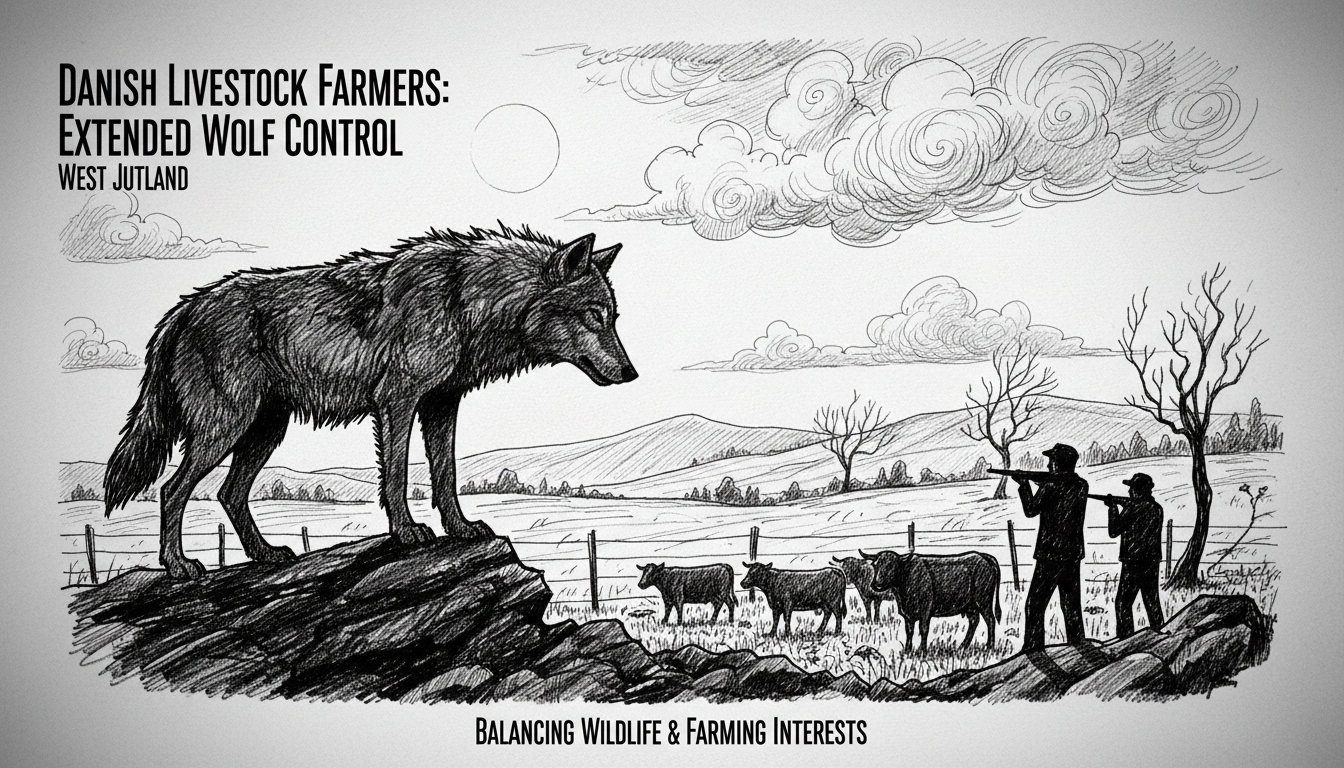Three Danish livestock owners with wolf-proof fencing can now extend their permits to shoot a problem wolf in the Klosterheden area of West Jutland. The Danish Agency for Green Infrastructure and Water Environment announced this extension in an official statement. The permissions will remain valid through January 5, while other livestock owners in the region with proper wolf fencing can also apply for shooting permits.
This decision follows a recent wolf attack on lambs behind fencing south of Struer. On November 13, a wolf consultant confirmed that a wolf had attacked lambs behind fencing that mostly met wolf-proof standards. Although the fencing didn't fully comply with all requirements, officials determined it provided good protective effect overall.
Lasse Jensen, team leader at the Agency for Green Infrastructure and Water Environment, explained the reasoning. He said the option to regulate the problem wolf in the area was extended because the fencing demonstrated substantial protective capability despite minor deviations from requirements.
This marks the second extension of wolf control measures in this region. The first extension occurred on October 10 following multiple wolf sightings near wolf-proof fences. The original permission was granted after authorities confirmed on August 28 that a wolf had attacked a sheep flock behind wolf-proof fencing.
The recent attack south of Struer occurred just kilometers from the August incident. Officials suggest this could indicate the same wolf is responsible, prompting expansion of the current control zone.
Denmark's wolf management policies have evolved significantly in recent months. The Ministry of Green Tripartite tightened the definition of problem wolves last April. Now, a single attack on livestock behind wolf-proof fencing can classify a wolf as a problem animal requiring management.
Wolf-proof fencing standards require minimum height of 1.10 meters with additional electrified wires. Livestock owners can apply for subsidies to install this specialized protective fencing.
This situation highlights the ongoing tension between wildlife conservation and agricultural interests in Denmark. The country has seen increasing wolf populations returning naturally to its landscapes after centuries of absence. While many celebrate this ecological recovery, farmers face real economic threats from predation.
The repeated extensions of control permissions suggest authorities are struggling to balance these competing interests effectively. The pattern of attacks in the same area indicates either persistent wolf behavior or insufficient protective measures.
International readers should understand that Nordic countries approach wolf management differently than many other regions. Denmark, Sweden, and Norway all maintain strict protocols for when lethal control becomes permissible. The requirement for wolf-proof fencing before considering lethal measures represents a compromise position between conservation and agricultural protection.
What happens next depends on whether the control measures prove effective. If attacks continue, pressure will likely grow for more permanent solutions. The coming months will reveal whether current approaches successfully address the conflict or if stronger measures become necessary.

